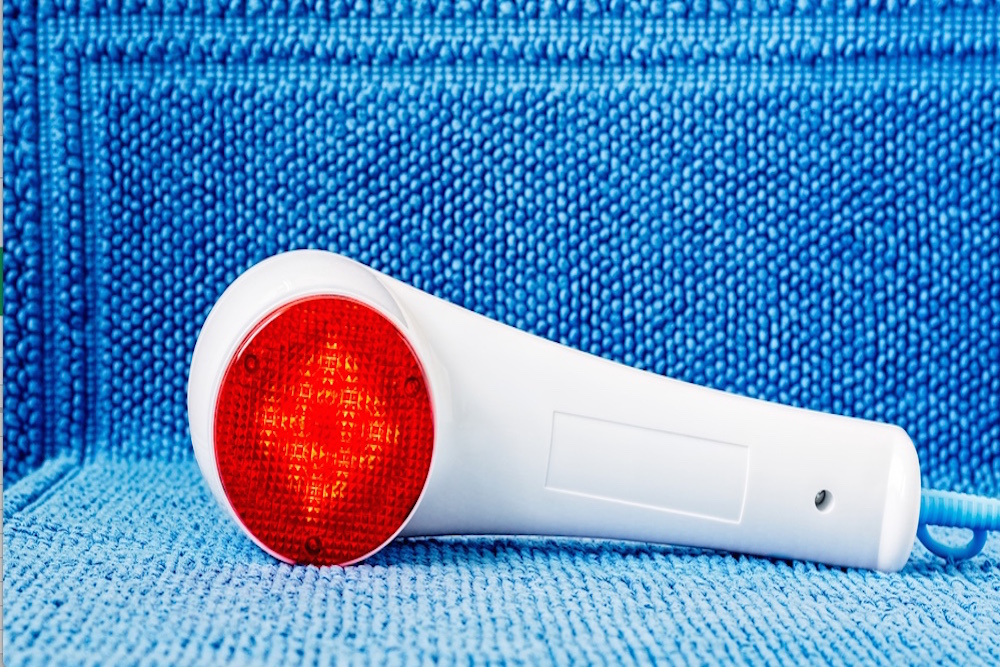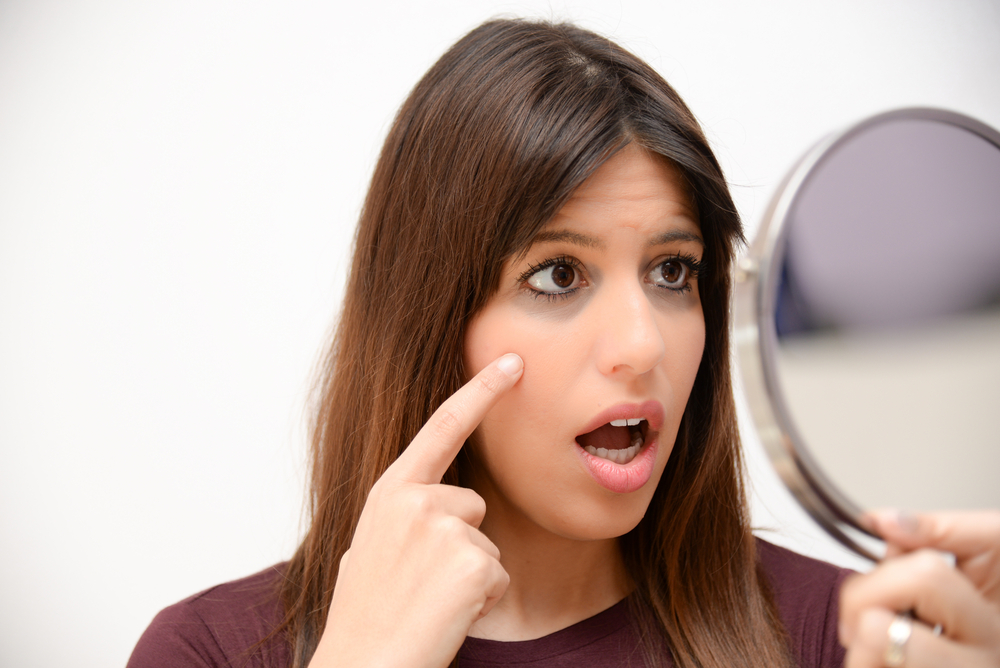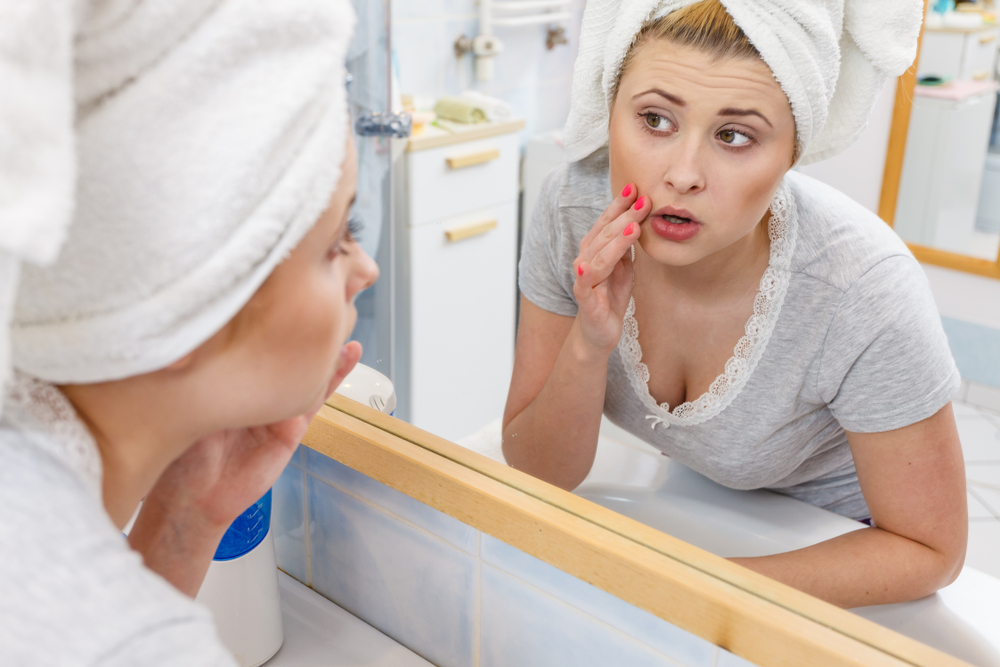- For the past few decades, red light therapy has been used as a non-invasive approach to a slew of cosmetic and health issues.
- Proponents of red light therapy claim that it offers a myriad of health benefits, including wound healing, pain relief and more.
- It’s also touted as a skin rejuvenation treatment and may help correct sun damage, wrinkles, acne, fine lines, cellulite, rosacea and acne scars.
- There are a few downsides to the treatment, though, and it shouldn’t be used for every single one of your ailments.
What if sitting beneath a glowing, red light for just a few minutes a day could turn back the hands of time? Some people claim that this is the case with red light therapy, a form of low-level light therapy that’s said to revitalize the skin, zap away cellulite, correct hair loss and improve the color and consistency of your skin tone. It’s even being touted as a new way to help soothe symptoms associated with eczema and rosacea.
And these low-level light therapy treatments aren’t just for cosmetics. They’re also said to treat a wide range of health issues and have been used to minimize joint pain, treat carpal tunnel syndrome, reduce depression and fatigue, treat arthritis, heal burns and even help cancer sufferers mitigate side effects and boost the immune system. This is all done through a form of low-wavelength incandescent, halogen or LED light therapy.
Red light treatment devices have been approved for use by the U.S. Food and Drug Administration (FDA) for anti-aging and pain relief applications, but with all these claims, we wanted to find out for ourselves whether this therapy actually works or not. Let’s take a closer look and see which of these claims — if any — make red light therapy worthy of all the hype.
What is Red Light Therapy?
During red light therapy (often called photomodulation or photobiomodulation), the skin is exposed to a low-level laser a few times a week over a defined treatment time, typically one or two months. You can use a red light therapy device at home or have treatments performed by a professional in a cosmetic clinic. Proponents believe that this low-level laser therapy will kick-start the body’s ability to recover and increase collagen production, blood flow and tissue repair.
The mechanics for how the therapy works are similar to traditional laser treatments, but it uses lower wavelengths, which are said to be safer on the eyes and skin. When the skin is exposed to light energy at the proper wavelength, it releases more adenosine triphosphate (ATP), which allegedly helps the body more quickly form new capillaries (small blood vessels), boost collagen production and repair damaged tissue, among other claims.
For these reasons, it’s used for everything from healing burns to treating arthritis to smoothing stretch marks. The first FDA-approved use for these types of devices was, in fact, to help speed up slow wound healing. These lasers penetrate the skin at between 8 and 10 millimeters and are therefore able to absorb deeper into the body to affect the nervous system, metabolic processes and immune system.
Red Light Therapy Vs. Other Laser Treatments
So, what makes it different from other types of laser therapy? It all comes down to the red light wavelengths. The procedure is called red light therapy because it emits visible red light when the devices emit lasers at roughly 600 nm, but many “red light” treatments also use near-infrared light (above 700 nm) or below visible red light (approximately 590 nm). Some devices also use combinations of red and blue light.
On the other hand, typical laser therapy — such as Nd: YAG lasers, which work at a wavelength of 1064 nm — generally emit light at a higher density than low-level red light therapy, which can cause more damage to tissues. The goal of traditional laser therapy, unlike red light and near-infrared therapy, is to damage the skin in order to promote faster healing and revitalization. Red light therapy does not have enough heat or power to injure, burn or destroy tissues.
The Facts: Does Red Light Therapy Work?
So, with all of this taken into account, let’s take a cold, hard look at the facts. Thankfully, there have been a number of studies conducted on the efficacy of red light therapy for various different conditions.
- Wound Healing — If burn and trauma victims could speed up wound healing through a non-invasive, pain-free treatment, there’s no doubt they would. The good news is, there’s actually a fair amount of research backing up the claim that low-level light therapy (either with low-level lasers or LEDs) can effectively promote faster healing of skin wounds. One study showed that the reason for this is that the therapies decrease inflammatory cells, increase fibroblast proliferation and increase collagen synthesis, which all boost the body’s ability to heal at a faster rate.
- Skin Rejuvenation — We already know that lasers can do wonders for our skin through the process of damaging certain cells and forcing them to heal on their own, so when that component is taken away, can light therapy still produce some visible results? In one clinical study, researchers found that patients who underwent red light therapy were overall very happy with their results, and that it produced significant improvements in terms of skin texture and complexion. The study also deduced that this type of therapy should be considered “mild” with few risks and side effects.
- Cancer Side Effects — One of the most interesting uses for red light therapy is in cancer treatment. One study conducted by NASA found that a NASA-developed low-level light therapy called HEALS could help cancer patients reduce side effects caused by radiation and chemotherapy. During the two-year trial, almost all patients who underwent low-level light therapy to treat oral mucositis (a painful side effect of chemotherapy), experienced some improvement in symptoms. NASA reported there is a 96 percent chance the improvement in pain was the result of its HEALS therapy.
- Pain Relief — One of the earliest pain relief approaches via red light therapy was to treat carpal tunnel syndrome. Now, the therapy is touted as a revolutionary way to help carpal tunnel patients manage wrist pain. The Tendlite low-light therapy device, for example, claims to speed up carpal tunnel treatment by up to 60 percent by reducing inflammation and healing tendons. Other studies show that this type of therapy can help heal chronic low back pain, neck pain and knee pain.
But, As Always… There are Some Downsides
If you thought all of this sounded far too good to be true, you’ve got good instincts. The primary problem with this type of therapy is that there are so many different devices — both at-home and professional-use devices — that it’s nearly impossible to measure the efficacy of all of them. If you’d like to try out red light therapy for yourself, we highly recommend seeing a professional to ensure that the right wavelengths and methods are used for your specific condition.
Another thing to consider is that many laser experts warn against using at-home laser therapy devices for treating certain ailments, like treating large areas of pain or cellulite. This is because many of these devices contain a very small emitter that makes them ineffective at treating larger areas. That means that if you want to purchase an at-home device for full-body use, you can expect the therapy to be a time-consuming, laborious endeavor.
There are risks and side effects to consider before you go under the light, too. The most commonly reported risk associated with red light therapy is potential damage to the eyes. Although low-level light is safer on the eyes than traditional lasers, proper eye protection should always be used during therapy. If you’re using an at-home device, to avoid eye damage or discomfort make sure that you never look directly into the lights. In general though, red light therapy is considered safe.
Should You Try Red Light Therapy?
To conclude, overall red light therapy has been well-researched and is a safe, natural, non-invasive way to treat a myriad of cosmetic and health conditions. As with any new treatment, you should make sure to talk to your doctor before starting low-level light therapy.









